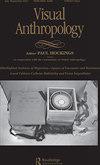Introduction
IF 0.3
Q3 ANTHROPOLOGY
引用次数: 0
Abstract
From the moment an individual steps out into the city streets and onto public transport or other city domains s/he enters into an unspoken dialogue which is going on between the city and its citizens through a variety of communication channels, both textual and visual, each of which relies on its own hybrid discourse. Audio, visual and textual modalities combine to project an image which the city (through its authorities) intends to translate to its inhabitants. What does the city have to say to its residents? Why? How? What can they see and hear? What do they understand and what instructions and ideas are expected to follow? The principles and ultimate goals of all the messages basically coincide, as they are all meant to resonate with the social background and operating political and social practices, and to translate administrative power. Sometimes the city is sending a clear, straightforward message, sometimes an unobtrusive, subtle and silent one, with a hidden agenda to foster values and beliefs, knowledge and power. Despite the city’s discourse being omnipresent in the life of its public, “place-name research has carved out such a marginal existence within the discipline of geography and is commonly conceived of as ‘the old and largely discredited field of toponymy’” (Goodchild 2004, 712). Moreover, some genres have been escaping researchers, especially those which combine different codes, and it’s only recently that they have got into their research focus. Smallformat texts such as commemorative plaques, or other multimodal ones that combine audio, visual and verbal codes, are now getting more and more attention, however. The authors here refer to these texts as multimodal, a term emphasizing the focus on perception channels, rather than using the term multicode(d), which does, in turn, focus on the coding systems (visual, textual, auditory); nor do they use the term hybrid, which suggests that the text is in some respect not homogeneous—without specifying in which particular respect. Modality implies the speaker/recipient’s being an active participant in the state of affairs, which better reflects the communication specifics the parties are involved in. Originally research into the city’s information landscape focused on the accumulation of data, proceeding further to etymological and derivational data analysis (cf. the review in Rose-Redwood, Alderman, and Azaryahu 2010); but then the end of the 20th century saw a “critical turn” to a discursive approach to the analysis, toward hybrid forms within a multidisciplinary approach. This turn entailed new methodologies and new principles that focus on semiotics, hybrid codes, cultural arenas and the discourse of power on behalf of the authorities.介绍
从一个人走上城市街道、乘坐公共交通工具或其他城市领域的那一刻起,他/他就进入了一场无声的对话,这场对话通过文本和视觉的各种沟通渠道在城市和公民之间进行,每种沟通渠道都依赖于自己的混合话语。音频、视觉和文本模式相结合,投射出城市(通过其当局)打算翻译给居民的图像。这个城市对它的居民有什么要说的?为什么?怎样他们能看到和听到什么?他们理解什么,期望遵循什么指示和想法?所有信息的原则和最终目标基本一致,因为它们都是为了与社会背景和运作的政治和社会实践产生共鸣,并转化行政权力。有时,这座城市发出了一个清晰、直接的信息,有时是一个不引人注目、微妙而沉默的信息,其中隐藏着培养价值观和信仰、知识和权力的议程。尽管这座城市的话语在公众生活中无处不在,但“地名研究在地理学学科中已经形成了一种边缘存在,通常被认为是‘古老且基本上不可信的地名学领域’”(Goodchild 2004712)。此外,一些流派一直在躲避研究人员,尤其是那些结合了不同代码的流派,直到最近才成为他们的研究重点。然而,纪念牌等小格式文本,或其他结合了音频、视觉和语言代码的多模式文本,现在正受到越来越多的关注。作者在这里将这些文本称为多模式文本,这个术语强调对感知通道的关注,而不是使用术语multicode(d),后者反过来关注编码系统(视觉、文本、听觉);他们也没有使用“混合”一词,这表明文本在某些方面不是同质的——没有具体说明在哪个方面。模态意味着说话者/接受者是事态的积极参与者,这更好地反映了各方所参与的沟通细节。最初对城市信息景观的研究侧重于数据的积累,进一步进行词源和派生数据分析(参见Rose Redwood、Alderman和Azaryahu的综述,2010年);但在20世纪末,人们看到了一个“关键的转折”,转向了话语式的分析方法,转向了多学科方法中的混合形式。这一转变带来了新的方法和原则,这些方法和原则侧重于符号学、混合代码、文化领域和代表当局的权力话语。
本文章由计算机程序翻译,如有差异,请以英文原文为准。
求助全文
约1分钟内获得全文
求助全文
来源期刊

Visual Anthropology
ANTHROPOLOGY-
CiteScore
1.00
自引率
50.00%
发文量
19
期刊介绍:
Visual Anthropology is a scholarly journal presenting original articles, commentary, discussions, film reviews, and book reviews on anthropological and ethnographic topics. The journal focuses on the study of human behavior through visual means. Experts in the field also examine visual symbolic forms from a cultural-historical framework and provide a cross-cultural study of art and artifacts. Visual Anthropology also promotes the study, use, and production of anthropological and ethnographic films, videos, and photographs for research and teaching.
 求助内容:
求助内容: 应助结果提醒方式:
应助结果提醒方式:


